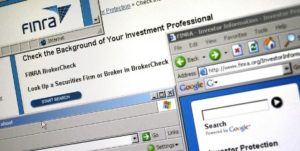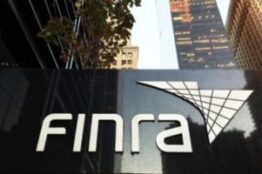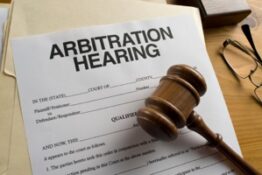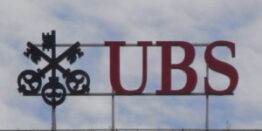

The SEC’s Office of Investor Education and Advocacy is issued and Investor Bulletin to help educate investors about lost and stolen securities and the Commission’s Lost and Stolen Securities Program (LSSP), a database for securities certificates reported lost, stolen, missing, or counterfeit.
About Lost and Stolen Securities
When a security certificate is retired, such as when a bond is redeemed or ownership of stock is transferred, the certificate is cancelled by the transfer agent. Cancellation normally involves both an accounting entry on the books of the transfer agent and an alteration of the certificate itself. After cancellation of a registered certificate, the Exchange Act’s record retention rules require that the certificate or appropriate record of the certificate be retained for not less than six years.
In recent years, many corporate bond issues have been called for redemption and cancelled decades before their maturities. These bond redemptions and an active stock market have generated vast amounts of cancelled securities certificates that must be processed, stored, and safeguarded.
Certificate processing of retired certificates can involve significant costs and risks. For example, in 1992, cancelled bond certificates with a face amount of approximately $111 billion disappeared after being delivered from a transfer agent’s warehouse to a certificate destruction vendor. The certificates later began to resurface worldwide. A number of banks and brokers, as well as individuals, were defrauded through sales of the cancelled certificates for cash or through use of the cancelled certificates as loan collateral. In another instance, a transfer agent’s shipping bags filled with cancelled certificates were stolen while in commercial air transit. When the shipping bags were stolen, neither the transfer agent nor its bank processing agent realized that the certificates were missing. A number of the certificates later resurfaced in off-market transactions.
In many cases, the stolen certificates have reentered the marketplace either through sales or as collateral for loans, resulting in fraud on public investors, public companies, creditors, broker-dealers, and transfer agents. Not only do situations such as these present potential liability for the transfer agents responsible, but they consume the resources of regulatory and criminal law enforcement agencies.
The SEC’s Lost and Stolen Securities Program
Congress directed the establishment of the LSSP to curtail tracking in lost, stolen, missing, and counterfeit securities certificates. Rule 17f-1 under the Exchange Act governs LSSP operations. The LSSP consists mainly of a database for securities that have been reported lost, stolen, missing, or counterfeit. The LSSP has two essential parts: “reports” and “inquiries.” Most financial institutions (including exchanges, banks, brokers, clearing agencies, and transfer agents) are required to report any certificates that they discover to be lost, stolen, missing, or counterfeit. These institutions also must inquire of the LSSP about any securities certificate valued at more than $10,000 that comes into their “possession or keeping.” These financial institutions also may voluntarily report or inquire about other certificates.
Beginning in 2000, LSSP members began voluntarily adding reports of cancelled securities certificates to the database as a result of an industry-wide initiative to make the database more complete and to assist LSSP participants in determining whether securities certificates that come into their possession are valid. The LSSP is operated by the Securities Information Center (SIC) as the SEC’s designee pursuant to a contract. SIC receives all reports and inquiries, responds to inquiries, and maintains the LSSP’s database. As of December 31, 2011, the LSSP’s database reflected securities with a value of approximately $801billion. There were 24,969 reporting institutions. During the year 2011, reports were made on 512,807 certificates (an average of 2,035 certificates per business day); inquiries were made on 10,998,507 certificates (an average of 43,642 certificates per business day); and matches or “hits” resulting from inquiries occurred on 348,791 certificates, which had a value of approximately $8,789,674,628. The hits essentially warned the inquirers that the certificates had been reported as lost, stolen, missing, or counterfeit and were not eligible for transfer.
What can investors do?
Investors holding certificates should take care in safeguarding them from theft or other loss. If your securities certificate is lost, accidentally destroyed, or stolen, you should immediately contact the transfer agent and request a “stop transfer” to prevent ownership of the securities from being transferred from your name to another’s. Your broker may be able to assist you with this process. The broker or transfer agent will report the certificates as missing to the LSSP. If you later find the missing certificate, you should notify whomever you called to place the “stop transfer” so that the lost or stolen securities report may be removed. Otherwise, you may have difficulty selling or transferring the securities.
If you are expecting a certificate through the mail and it doesn’t arrive, you should immediately contact the organization that arranged the transaction — typically your brokerage firm. While many companies choose to use registered or certified mail to deliver securities certificates to individuals, some prefer to use regular mail so as not to call attention to the potential value of the item.
You can get a new certificate to replace the missing one. However, before issuing a new certificate, issuers usually require the following:
- The owner must state all the facts surrounding the loss in an affidavit
- The owner must buy an indemnity bond to protect the issuer and the transfer agent against the possibility that the lost certificate may be presented later by an innocent purchaser. The bond usually costs between two or three percent of the current market value of the missing certificates
- The owner must request a new certificate before an innocent purchaser acquires it
We recommend that you keep a copy of both sides of your certificates separate from the certificates themselves. If a certificate is lost or stolen and then transferred on the books of the transfer agent to another owner, it may be impossible for you to establish that you owned it because the transfer agent will no longer have a record of your name. But if you have a record of the certificate numbers, the transfer agent should be able to reconstruct when it was transferred and to whom.
Securities certificates are valuable and should be safeguarded. To avoid the cost and burden of safeguarding certificates, some investors let their brokerage firm hold their securities for them in “street name.” And increasingly, certificates for many securities are not even available, as companies may use direct registration “book entry” securities where your ownership is reflected on the books of a company. For more information on how investors can hold securities, please see our publication Holding Your Securities — Get the Facts.
More information on lost and stolen certificates and advice for investors is available at http://www.sec.gov/answers/lostcert.htm.
Guiliano Law Group
If you have been the victim of securities fraud you should consult with an attorney. The practice of Nicholas J. Guiliano, Esq., and The Guiliano Law Group, P.C., is limited to the representation of investors in claims for fraud in connection with the sale of securities, the sale or recommendation of excessively risky or unsuitable securities, breach of fiduciary duty, and the failure to supervise. We accept representation on a contingent fee basis, meaning there is no cost unless we make a recovery for you, and there is never any charge for a consultation or an evaluation of your claim. For more information contact us at (877) SEC-ATTY.







